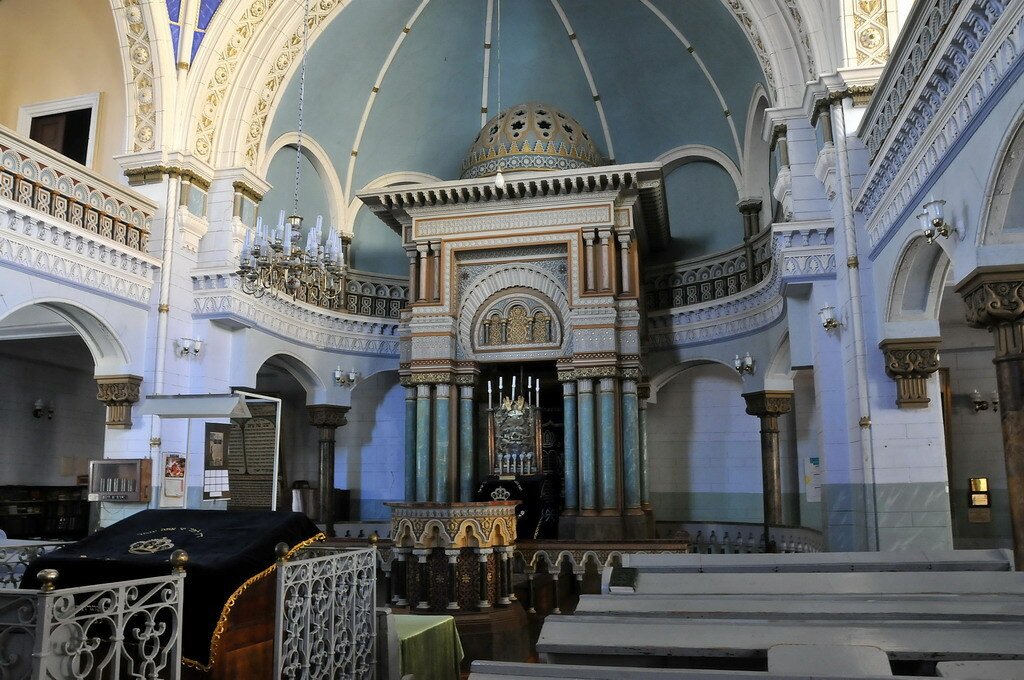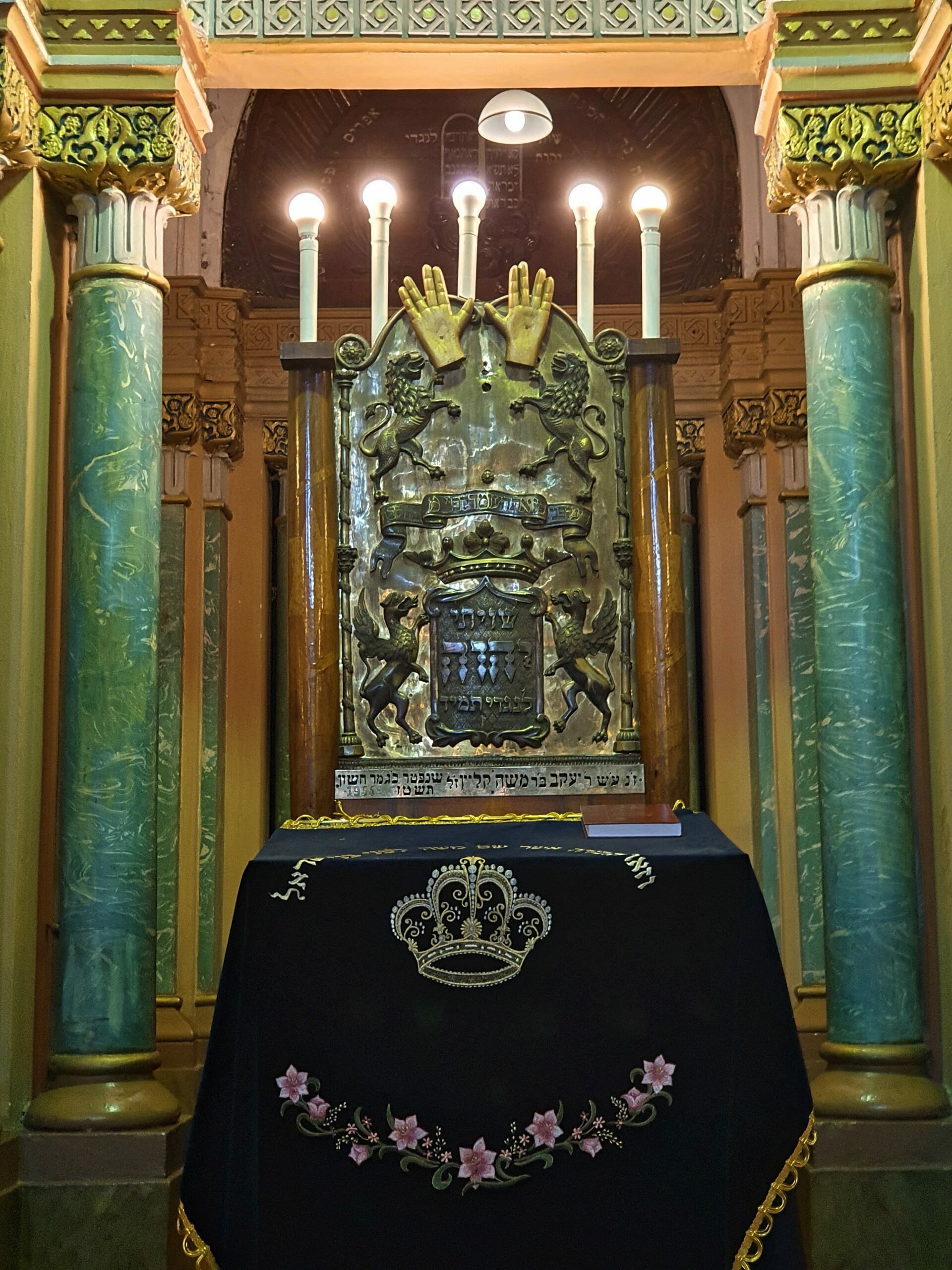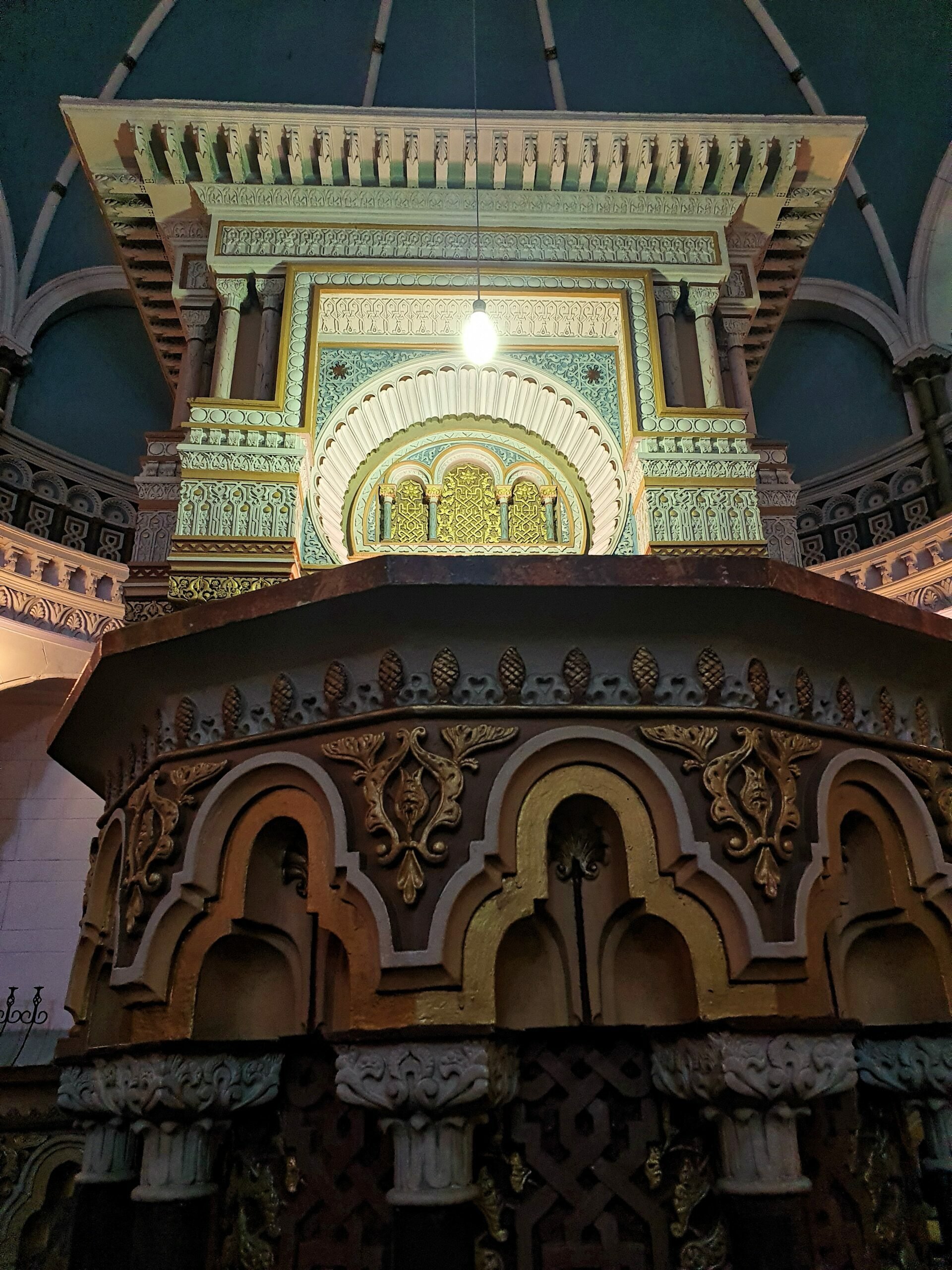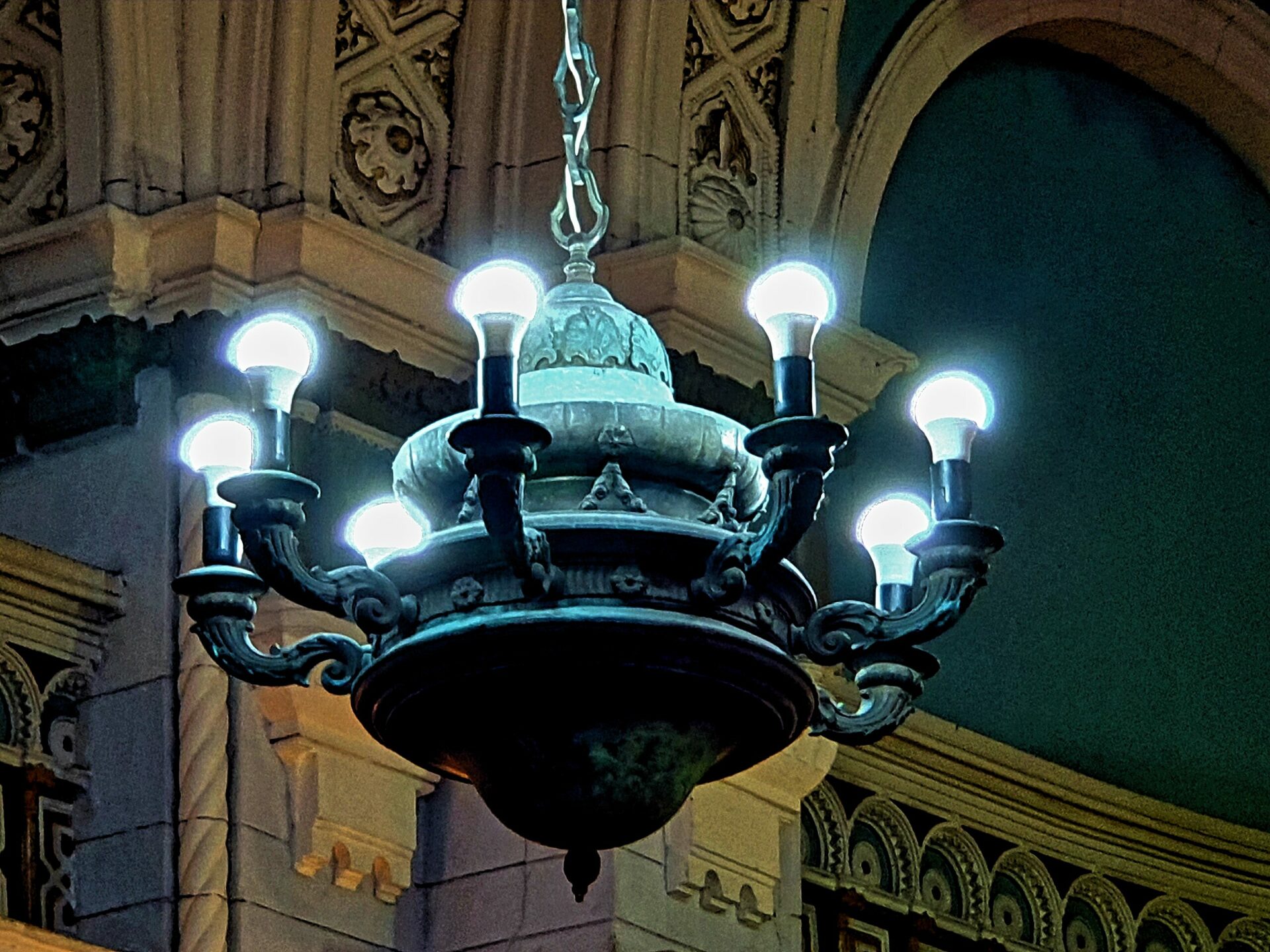Choral Synagogue
Vilnius Choral Synagogue or Taharot Hakodesh Synagogue is the only surviving Jewish temple in Vilnius. It was built in 1900 on the former Zavalnos Street (now Pylimo). Jewish educators (maskilic) began the construction of the synagogue. 1902 architect David Rosenhausen prepared the design of the synagogue building.The Moresque architectural style is unique. The building acquired the name Choral Synagogue because of the songs sung during the services.
The vestibule and staircases precede the prayer hall, where the direction towards the southeastern Torah ark is perpendicular to that of the entrance. On the first floor, the prayer hall is surrounded on three sides by women’s galleries. The Torah ark, preceded by a domed canopy decorated with colonettes, dentiled cornice and crenellation, is placed in a semicircular apse, within the ambulatory. A pulpit for a preacher – a distinctive feature of a “progressive” synagogue – is situated in front of the ark. The bimah is fenced by a metal parapet and situated in the midst of the pews. The first floor of the ambulatory served the choir. Four massive piers support the central cupola, while the women’s galleries and the choir rest on columns reminiscent of Alhambra. The hall is abundantly lit by the Palladian windows and by the cupola skylight, glazed as a Star of David.
Members of Lithuanian Jewish communities pray in the synagogue. Jews from all over the world visiting Vilnius often take part in them. Traditional Jewish holidays are celebrated. There are Tora study classes, active and women’s club activities.
Vilnius Choral Synagogue or Taharat ha’Kodesh Synagogue is the only surviving of the 110 Vilnius synagogues and Jewish houses of worship.

Moorish architecture
Moorish architecture, is an architectural style which is historically developed in the western Islamic world, which included al-Andalus (Muslim-ruled Spain and Portugal between 711 and 1492), Morocco, Algeria, Tunisia, and Libya.
This architectural style blended influences from Berber culture in North Africa, pre-Islamic Iberia (Roman, Byzantine, and Visigothic), and contemporary artistic currents in the Islamic Middle East to elaborate a unique style over centuries with recognizable features such as the “Moorish” arch, riad gardens (courtyard gardens with a symmetrical four-part division), and elaborate geometric and arabesque motifs in wood, stucco, and tilework (notably zellij).
Much later, particularly in the 19th century, the Moorish style was frequently imitated or emulated in the Neo-Moorish or Moorish Revival style which emerged in Europe and America as part of the Romanticist interest in the “Orient” and also, notably, as a recurring choice for new Jewish Synagogue architecture.
Synagogues had a very different layout from mosques but in North Africa and Al-Andalus they often shared similar decorative trends as the traditional Islamic architecture around them, such as colourful tilework and carved stucco,though later synagogues in North Africa were built in other styles too.



Currently, four plaques in gilded frames are situated on the walls of the prayer hall. Two of them, one entitled “Psalms for the Holidays according to the Custom of the Vilna Gaon” and another containing several holidays’ prayers, originate from the Leather Goods Retailers’ Kloyz “Beit Yaakov” at 7 Gaono Street. The origins of the third plaque, containing thirteen Maimonides’ principals of the Jewish faith, is unclear, though it certainly originates from another synagogue, to which it was donated by Shalom Tsam in 1913. The fourth plaque was made after WW II and it includes the prayer in memory of the Jews who perished in the Holocaust as well as yor-tsayt dates for the 125 Jewish communities in Lithuania.

The Choral Synagogue is also a public place that does not belong to any specific groups.
Today you can visit the Choral Synagogue by prior arrangement by phone: +370 526 12523.
Project partner: Vilnius City Municipality
